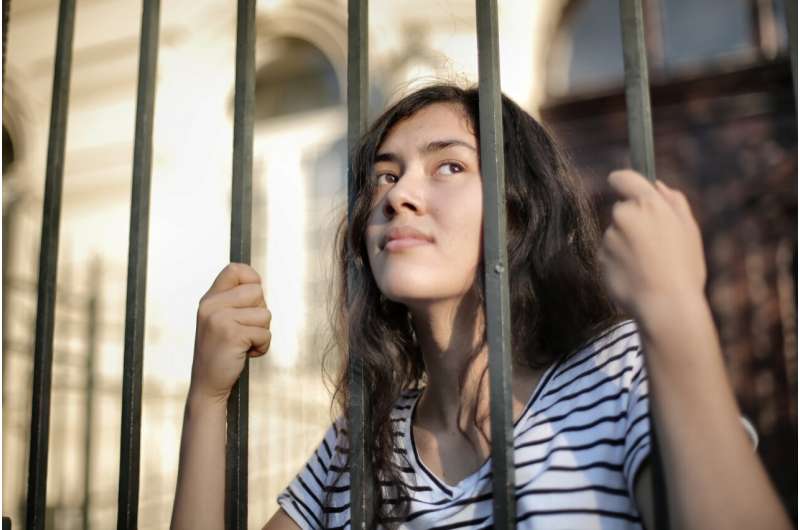
In the year to June 2021, for every 1,000 women in custody in England and Wales, 3,808 incidents of self-harm were recorded. This represented a shocking increase of 16% on the previous year. Between March 2007 and March 2018, 37 women in prison took their own lives.
Evidence suggests that the link between self-harm and suicide is stronger in prisons than in the wider community. For a recent study we conducted interviews with 37 women in three closed prisons in England between September 2019 and February 2020. A key aim of our research was to amplify women’s voices. Self-harm was not an issue we had set out to explore in this study, but it was a topic that many nevertheless chose to share.
Our findings show that having prior experience of living in care can provide crucial context for understanding why some women in prison might self-harm. All the women we spoke with had experience of the care system before going to prison. Self-harm was raised as a key issue by some.
Unmet needs
Women who have been through the care system are over-represented in prisons in England. While there are challenges in obtaining accurate data, estimates suggest that 31% of female prisoners (compared to 24% of imprisoned men) spent time in the care of the state as children.
This is, of course, not inevitable. Many care leavers go on to do very well when appropriately supported. But a significant minority do come into contact with the justice system, with challenging behavior such as minor damage to property still more likely to be criminalized in some care settings than for those living at home with their birth families. This is often compounded by the stigma attached to being in care. Negative attitudes assume some care leavers will inevitably be troublesome.
Many of the women we interviewed described backgrounds of abuse and neglect and being taken into care for their welfare and protection. As one interviewee, Mandy, explained:
“I was a traumatic child … very, very out of control … I didn’t know how to ask for help. Because in the care system I was never shown all that.”
For some, self-harm became a way of communicating their trauma. Several described harming themselves as a way of alleviating psychological pain. In the most severe cases, for those women who tried to take their own lives, it became an attempt to end that pain.
Systemic failure
There has been a tendency for research to focus on the personal factors that might lead an individual to self-harm. Research on the sociology of punishment, however, has highlighted how self-injury may be linked to the painful experiences of imprisonment for some women, such as separation from loved ones.
Our own research draws attention to what is lacking in the systems designed to support these women. Women described delays in accessing medication on entry to prison and in obtaining mental health appointments, among other challenges. Not feeling listened to in care was a common theme often repeated in prison. As Leanne put it: “There’s a lot of self-harm in this prison, a lot. Because they don’t feel heard … they don’t get dealt with in the right manner. They just get locked away and … labeled.”
For some, experiences of the prison system echoed experiences the women described from their time in care, which was often characterized by instability and a lack of support. Their mental health needs went unmet—they were frequently moved from placement to placement.
For women who were previously in the care of the state as children, access to mental health support is crucial, as is making sure that those who leave care are not abandoned. More broadly, our findings raise serious questions about how we, as a society, use imprisonment as a punitive measure for these women.
While there are ongoing efforts to identify and improve the support available to those who have gone from care to prison, research also shows the potential of community sentences, such as deferred prosecution schemes, to be credible, cost-effective alternatives to custody that avoid the trauma of imprisonment. Even better, however, is to ensure that children in care receive all the support they need. This would help to prevent those who have been in care from being unnecessarily criminalized in the first place.
(All names have been changed to protect the identity of the participants.)
Claire Fitzpatrick, The Conversation

